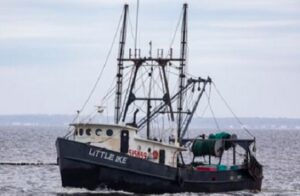Tag Archives: Gulf of Maine
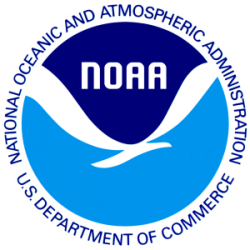
NOAA Fisheries Announces Common Pool Area Closure for Gulf of Maine Cod
Effective at 4:15 pm on July 27, 2023 – Statistical areas 513 and 514 are closed for the remainder of Trimester 1, through August 31, 2023. This closure applies to all common pool vessels fishing on a groundfish trip with trawl, sink gillnet, or longline/hook gear, including handgear vessels. The closure is required because 90 percent of the Trimester 1 Total Allowable Catch (TAC) for Gulf of Maine (GOM) cod has been caught. This area will reopen at the beginning of Trimester 2, at 0001 hours, September 1, 2023. >click to read< 12:58
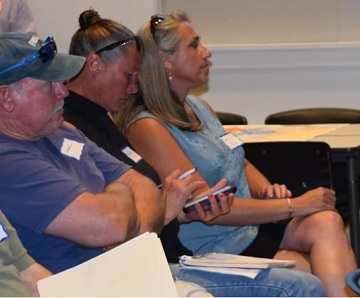
Maine Fishermen, scientists find flaws in potential wind energy lease areas
BOEM officials called the meeting to review newly released draft maps of where federal leases could be offered in the Gulf of Maine, known as the “call” area. They wanted fishermen’s feedback to see where the maps fell short based on what fishermen know from working on the water. “This is very difficult for our industry to face,” said Dustin Delano, New England Fishermen Stewardship’s chief operating officer, former vice president of the Maine Lobster Association and a fourth-generation lobsterman out of Friendship. “A lot of us feel this is going to wipe us off the map.” The fishermen present were unconvinced but resigned. >click to read< 07:55
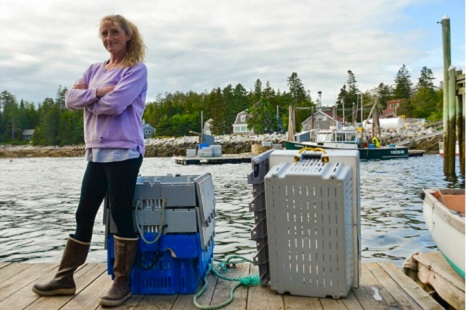
Meet the Women Making Waves in Maine’s Tough Lobster Industry
When Krista Tripp was 18, she’d completed all of the hours at sea necessary to get her captain’s license, but her parents submitted her brother’s paperwork to the State of Maine and not hers. Why? Even though Krista had been hauling traps since she was eight years old and running her own boat since 15, the expectation was that now she’d settle down and start having babies. “My brother and I shared the boat, we had 150 traps, and I became obsessed at an early age,” Tripp recalls. “I knew that was what I wanted to do. But, as a girl, my parents didn’t really take me seriously.” Tripp would spend the next few years working as a sternman off of a scallop boat in Massachusetts. Eventually, she returned to Maine, and after 14 years, she got herself off the waiting list and became the captain of her own lobster boat. Today, she has been captaining her own lobster boat for more than eight years. Photos, >click to read< 14:23
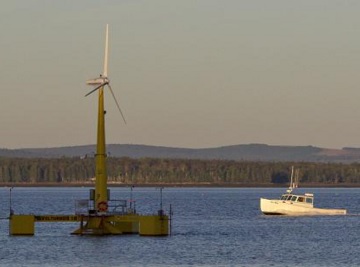
Proposal before Maine lawmakers would jumpstart offshore wind projects
Maine is poised to launch an offshore wind program that would meet clean energy goals and produce enough power for about 900,000 homes from floating wind turbines in the Gulf of Maine. The bill was revised after a veto by Democratic Gov. Janet Mills to ensure non-union companies can get into the business, setting a path to approval by the Maine Senate and House on Tuesday. Approval would put Maine on a path to catch up with other states that already have offshore wind projects. It also includes incentives aimed at ensuring wind power developers steer clear of lucrative lobster fishing grounds. The bill’s sponsor, Sen. Mark Lawrence, D-York, said he believes the compromise bill has necessary “guardrails in place to make sure this is done right and truly benefits Mainers.” >click to read< 11:23
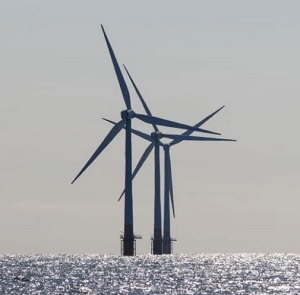
Gloucester Fishing industry reps raise concerns about wind energy areas
Commercial fisherman Al Cottone, executive director of the Gloucester Fisheries Commission, and Angela Sanfilippo, executive director of the Massachusetts Fishermen’s Partnership and president of the Gloucester Fishermen’s Wives Association, outlined the fishing industry’s concerns with offshore wind development. “First of all the construction process, the areas that are going to be used will probably be lost forever for commercial fishing,” Cottone said. “There are going to be a lot of losers when it comes to activity within these areas. You are not going to be able to find an area to put these arrays where someone is not going to lose their ability to fish and make a living,” Cottone said. He said this was a critical time for the local fishing industry. >click to read< 07:46

BOEM Schedules In-Person Informational Meetings on Offshore Wind in the Gulf of Maine
BOEM invites you to attend in-person meetings in Massachusetts, New Hampshire, and Maine in July 2023. BOEM is seeking feedback and local knowledge from the Gulf of Maine fishing community to facilitate improvements in spatial models used to inform draft Wind Energy Areas in the Gulf of Maine. The in-person meetings will provide opportunities to meet with BOEM staff, learn about the data BOEM has received for the models, and provide feedback on how their spatial models are incorporating the data. The meetings will include a mixture of small-group conversations and plenary speakers. Additional opportunities to comment will be available after the meetings. >click for schedule and locations< 16:49
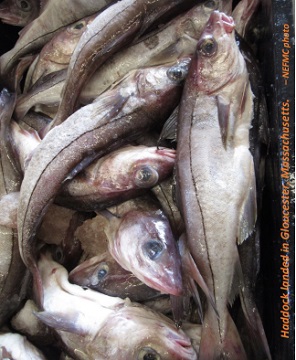
Haddock quotas for fishermen have been drastically cut. What does that mean for haddock eaters?
There is a haddock problem swimming around Gulf of Maine waters. But don’t blame the problem on fishermen catching too many haddock, say Maine commercial fishing advocates like Ben Martens, executive director of the Maine Coast Fishermen’s Association. In fact, they have been fishing in accordance with mandated quotas for decades, he said, regulatory measures that have returned the haddock stocks in the Gulf of Maine to sustainable levels. The problem, rather, is grounded in inaccurate accounting of the boom-and-bust cycles of haddock biomass, that is, how many fish are swimming in the Gulf of Maine at any given time. In April, the New England Fishery Management Council, a regional body that uses industry and scientific data to recommend quotas that restrict how many metric tons of regulated species Maine fishermen can haul in each year, announced a cut in haddock quotas. It represents an 80 percent reduction in allowable catch; the new season began on May 1. >click to read< 08:50
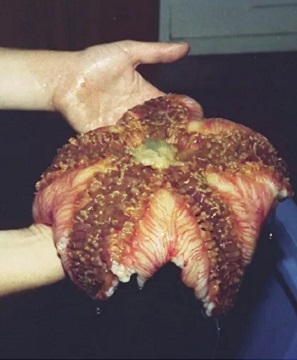
How I met a slime star: A rare and slimy encounter in the Gulf of Maine
Back in 1993, a friend called and asked me about an article he had read in the June issue of the National Geographic about a weird animal called a slime star. He wanted to know if I had ever seen one and if they are found in New England. I told him I had never seen one and that I believed they are found in the Pacific, not the Atlantic. Less than a month later, I was proved wrong! My husband had been fishing on his stern trawler in about 420 feet of water near the “Curl” on Jeffreys Ledge in the Gulf of Maine. He called me and told me he had something odd in his lobster tank. I asked him to describe it to me. He said that it was giving off gallons and gallons of mucus. Photos, >click to read< 12:08
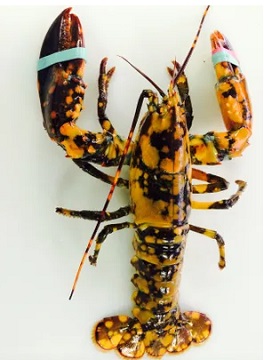
What’s behind the surge of blue, orange and calico lobsters in the Gulf of Maine?
If you have been to the Oceanarium at Hampton Beach, you know that we usually have some odd-looking lobsters. We currently have an orange, a blue, a calico, and a normal-colored lobster in our tanks. The question is always: How rare are these animals? The answer has gotten more and more murky as the years pass. The color of lobsters can be due to several things. Diet can cause them to be less vivid or more yellow from eating certain seaweeds. Shell disease can cause them to be spotted and appear to be calico. The color can also be caused by a genetic mutation, which affects the proteins in their exoskeleton. photos, >click to read< 10:53

U.S. Rep. Jared Golden introduced a bill in Congress that would prevent offshore wind development in key fishing area
The bill would prevent the federal Bureau of Ocean Energy Management from potentially hurting the fishing and lobstering industries in Maine, said Golden, D-2nd District. The legislation also would launch an assessment of how federal agencies like the BOEM and the National Marine Fisheries Service study the effects of offshore wind development and engage with industry groups. Lobster Management Area 1 is the zone closest to the shores of Maine and stretches along the entire coast. That’s where Virginia Olsen, a commercial lobsterman and director of the Maine Lobstering Union, says a majority of Maine fishing and lobstering is concentrated. “I think this is the exclusion zone that the Maine Lobster Union and the area that the (Maine Lobstermen’s Association) would agree is most important economically to the fishery,” Golden said. >click to read< 19:46
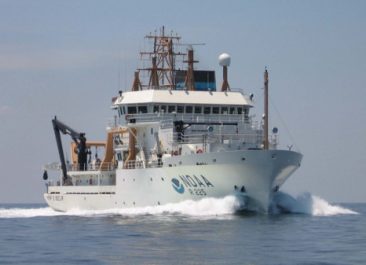
Fishermen To Replace NOAA With NEFSA Due to Reliance on Inaccurate Data to Set Catch Quota
NOAA which has the task of managing and safeguarding the nation’s marine resources, sets catch quotas to ensure sustainable fishing practices annually. However, it has been discovered from an investigation that the agency uses heavily outdated and incomplete information to estimate its fish and marine life population, and subsequently set fish catch quotas’ sets quotas for particular species based on data it collects from its research vessels. NOAA’s research vessel for the Northeast and the Mid-Atlantic is the Henry B. Bigelow, homeported in Newport, Rhode Island, U.S.A. A group called the New England Fishermen Stewardship Association (NEFSA), a new coalition of lobstermen, fishermen, and fishing-adjacent businesses was formed as a replacement due to the reported drawbacks of NOAA. >click to read< 10:5

Maine Delegation, Gov. Mills asks BOEM to listen to fishermen, remove LMA1 from wind power planning

Haddock stock decline prompts catch limits
A low New England haddock stock has prompted regulators to cut the fishing quota of one of the region’s most popular fish. A staple in fish and chips and for fish burgers and home cooks, the amount available from the Gulf of Maine and Georges Bank for 2023 will be more than 80 percent less than the previous year. Prices are relatively high for shoppers, too, with Hannaford, Shaw’s and local fish dealers asking anywhere from $11.99 to $14.99 per pound this month for wild caught Gulf of Maine haddock. Haddock is “subject to overfishing” in the Gulf of Maine while the Georges Bank stock is not, according to NOAA Fisheries. >click to read< 19:02

Role of Unionized Firms at Center of Maine’s Offshore Wind Debate
On Thursday the Maine Legislature’s Energy, Utilities and Technology Committee held a public hearing on a proposal to pave the way for the development of offshore wind infrastructure in the Gulf of Maine, including the construction of a coastal manufacturing facility that would build the offshore floating wind turbines Lawmakers also considered Thursday Rep. Tiffany Strout’s (R-Harrington) LD 1884, a bill that would block offshore wind developments. In recent years, the prospect of filling the Gulf of Maine with hundreds of wind turbines has taken on an air of inevitability, with environmental groups, industry groups, and well-paid lobbyists pouring millions of dollars into political pressure campaigns and ad campaigns designed to build support for the project. Unions, construction companies, investment companies, and lobbyists are all lining up to secure their share of what could be one of the largest taxpayer-funded projects in the history of the state. >click to read< 09:42
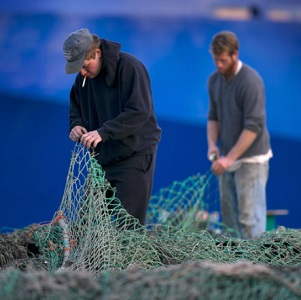
NEFMC asking NOAA to increase catch limit for haddock in Gulf of Maine to protect fishermen
In a statement issued April 20, the New England Fishery Management Council, which oversees fishing issues for the region, said the catch limit for the season that began May 1 is 1,936 metric tons, an 84 percent drop from last year. But now the council wants to give fishermen a reprieve, citing a rebound in haddock stock and after hearing concerns at the panel’s meeting last month in Mystic, Conn. “Fishermen have been encountering Gulf of Maine haddock at very high catch rates,” the council said, adding that several fishermen voiced concern “that an early shutdown of the fishery was highly likely and would have wide-ranging impacts.” “Even without targeting haddock, fishermen need haddock quota to account for bycatch while harvesting other species,” the council said. >click to read< 09:43
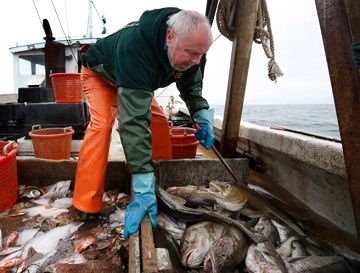
Mega Cut: Haddock, a staple Atlantic fish, is in decline off New England, regulators say
A recent scientific assessment found that the Gulf of Maine haddock stock declined unexpectedly, and that meant the catch quotas for the fish were unsustainably high, federal fishing managers said. “We seem to find plenty, but they can’t,” said Terry Alexander, a Maine-based fisher who targets haddock and other species. “It’s a disaster is what it is. A total, complete disaster.” The fishery management council mandated the 84% reduction in catch quotas for the current fishing year, which started May 1. The change applies to fishers who harvest haddock from the Gulf of Maine, a body of water off Massachusetts, New Hampshire and Maine. Fishers also harvest from Georges Bank, a fishing ground to the east where quotas were also reduced for this year, including adjoining areas overseen by Canadian officials who issued their own major cuts. >click to read< 08:02

Environmental Regulations and Wind Turbines Are Backing New England Fishermen into a Corner
Just three weeks ago, Jerry Leeman was a commercial fishing captain in New England and a very successful one at that. Now, as executive director of the newly formed New England Fishermen Stewardship Association, he’s leading the charge against Biden administration policies that threaten the industry he loves, including overregulation and wind-turbine development in the Gulf of Maine. Leeman said that he and fellow New England fishermen have serious concerns about the accuracy of the NOAA data. Fish-population assessments fell to the wayside during the Covid years — 2021 and 2022 — and the data-collection process has not yet been corrected. “Whether you’re a lobsterman or a ground fisherman, a trend up and down the coast here is that nobody wants wind turbines placed in our environment. It’s going to mess up our stocks and our species. Not to mention it’s going to change the viability for generations to come in the fishing grounds,” Leeman said. Photos, >click to read< 07:51
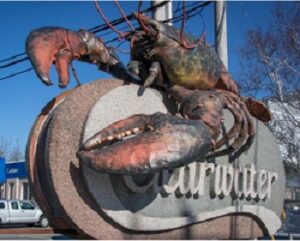
Clearwater Seafoods wants 72 tonnes of lobster added to its annual harvesting quota
The Indigenous-owned company has exclusive rights to Lobster Fishing Area 41, or LFA 41, off southern Nova Scotia, where Clearwater maintains a long-held quota of 720 tonnes. Last fall, the Membertou First Nation and Mi’kmaw partners in the company asked the Department of Fisheries and Oceans to increase the total allowable catch by ten per cent. In response, DFO has issued an “interim” total allowable catch of 720 tonnes for 2023 while it considers this request. The Brazil Rock Lobster Association, the Coldwater Lobster Association and the LFA 33 Advisory Committee have submitted letters to DFO in opposition. >click to read< 08:44

Maine: Fishing industry forum May 24
Our way of life up and down the Maine coast is under attack. Families that have made their living in the lobster industry for generations are on the road to extinction. If the federal government has their way, pending regulations will force the lobster industry out of business and the Gulf of Maine will be reserved for offshore wind. The Lincoln County Republicans are hosting an event on May 24 where the public can hear, firsthand, from three prominent men in the Maine fishing industry – Representative Billy Bob Faulkingham, Dustin Delano and Jason Joyce. The event will be held at Coastal Christian School, 574 N. Nobleboro Road, Waldoboro. Doors open at 5:30 p.m. >click to read< 15:52

Hope vs. rope: Can technology save the whales, and Maine’s lobster industry, too?
Along the coasts of Massachusetts and Rhode Island, scientists, engineers, and fishermen are working feverishly to develop a new, high-tech way to harvest lobster – and the result could be the key to the survival of both the U.S. lobster fishery and the imperiled North Atlantic right whale. But farther north in Maine, the epicenter of the fishery, it’s unusually quiet. Only one Maine business is working on the technology, and only a handful of Maine lobstermen will test it. Many won’t even discuss it. The ropeless part is being worked out, but another critical component – an interoperable, open platform to track gear – is far from ready. The new equipment also is, at least for now, prohibitively expensive. One lobsterman said it would cost him nearly $500,000 upfront. >click to read< 16:20

U.S. identifies Gulf of Maine area for offshore wind development
President Joe Biden’s administration on Tuesday said it had finalized an area of nearly 10 million acres in the Gulf of Maine for potential offshore wind development, a major step toward expanding the industry into northern New England. The announcement was the latest milestone in the government’s plan to put wind turbines along every U.S. coastline to help displace fossil fuel for power generation and fight climate change. In a statement, the U.S. Bureau of Ocean Energy Management said it would kick off a 45-day period for public comment on the area, which sits off the coasts of Massachusetts, New Hampshire and Maine. >click to read< 08:25
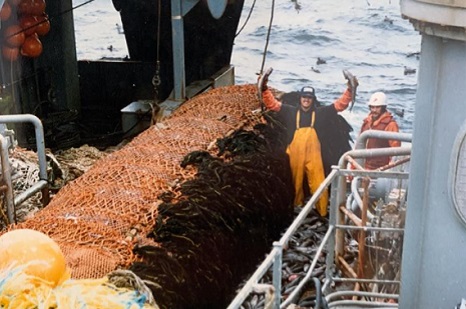
Who is Captain Sewall Maddocks?
Sewall’s love for the ocean first began when he was in grade school lobstering with his uncle Earl Brewer Sr. In 1977 he made his first trip on a trawler fishing with Richard McLellan on the F/V Sea Bring. He later became captain at 19 on the 82-foot F/V Irene’s Way, which was built for Richard at Goudy and Stevens in East Boothbay. In the early 80s, Sewall started to captain for F. J. O’Hara and Son’s out of Rockland, Maine He worked on the 110-foot F/V Alliance and later on the 119-foot F/V Araho, both stern trawlers, while fishing ground fish in the Gulf of Maine and on the northern edge of George’s Bank. Sewall later fished outside the 200 mile limit from Newfoundland on the tail of the Grand Banks. These boats typically had a crew of 5-6 people and caught 30,000-100,000 pounds of fish per trip with the fish being layered in ice in the fish hold. Great story! >click to read the rest< 10:22

NEFMC Requests Emergency Action for Gulf of Maine Haddock to Prevent Significant Fishery Impacts
The New England Fishery Management Council is asking NOAA Fisheries to take emergency action under the Secretary of Commerce’s authority to address a critical Gulf of Maine haddock situation that is expected to result in significant fishery impacts during the 2023 groundfish fishing year. The crux of the problem is this. Fishermen have been encountering Gulf of Maine haddock at very high catch rates. The proposed 2023 annual catch limit (ACL), however, is extremely low. The Council recently learned of one industry member who, in a single trip, harvested an amount of Gulf of Maine haddock equivalent to what will become his entire allocation for 2023. Several fishermen expressed concern that an early shutdown of the fishery was highly likely and would have wide-ranging impacts. >click to read< 15:43
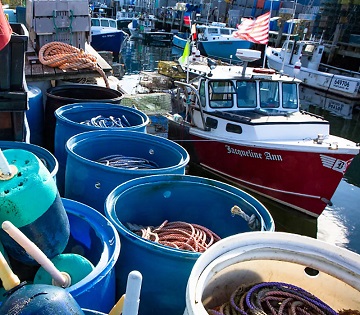
Maine’s seafood harvest has fallen 120M pounds since 2012
At 197 million pounds for all commercially harvested marine species, 2022 was the first time since 1975 that Maine’s reported annual seafood harvest has fallen short of 200 million pounds. In fact, the cumulative volume of Maine’s commercial fisheries dropped by more than 120 million pounds between 2012 and 2022, state data show. Patrick Keliher, head of the state’s Department of Marine Resources, said there are myriad reasons why fishery landings have declined — some regulatory, others environmental. Meanwhile, landings of lobster, which remains the state’s dominant fishery despite looming restrictions to better protect whales, have dipped in recent years but still are much higher than they were prior to the 1990s. >click to read< 09:12

Not for the pot: how ‘V-notching’ lobsters may help save them
Cornishman Ned Bailey has caught and returned ‘notched’ lobsters for years as part of a broader effort to preserve stocks. But many fishers do not. He tosses out stray crabs, several starfish and a squirming conger eel. Every so often he pulls out a lobster: if the carapace is over 90mm (3.5in) long, he keeps it; if not, it’s thrown back into the sea, in line with regulations. But today, one lobster, the underside of its tail bursting with clusters of inky-black eggs, is kept aside. This is a berried hen, a pregnant female, carrying about 20,000 eggs. Bailey cuts a small “V” into its dappled royal-blue and yellow tail before gently laying the lobster back in the water. Now she is marked as illegal for others to land – and with any luck her reproductive potential is secured for a few more years. >click to read< 09:39
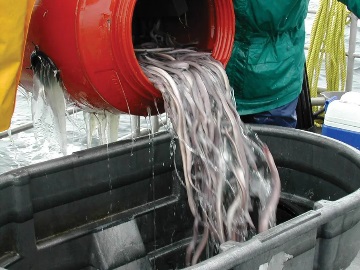
Meet the Hagfish, the Slime-Spewing Star of Maine’s Nastiest Little Fishery
The first time Vinalhaven lobsterboat captain Frank Thompson trapped hagfish in the Gulf of Maine, the pinkish-gray, snakelike animals popped the hatch off his hold — with their slime. When stressed or attacked, a single 20-inch-long hagfish spews a quart of stringy, suffocating snot in less than a second, and the stuff rapidly expands as it mixes with seawater. It was May 2009, and Thompson’s 48-foot boat was carrying 2,800 pounds of hagfish — that’s roughly 5,000 fish oozing copious slime from their skins. Unable to escape their own goop, many of the fish were dead when Thompson unloaded his catch in Gloucester, Massachusetts. >click to read< 17:24
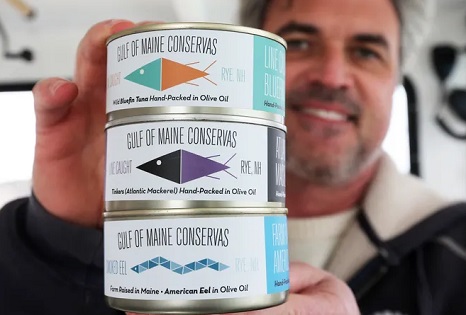
Rye, N.H. fisherman Keper Connell hooks consumer wave with his Gulf of Maine tinned tuna
Each tin of Gulf of Maine Conservas tuna begins with fisherman Keper Connell boarding Figment, his 45-foot Novi, long before sunrise to make the two-hour, 25 mile journey from Rye Harbor in New Hampshire to Jeffreys Ledge. Connell doesn’t catch tuna on every trip to the ledge, but when a giant bluefin does strike his line, he 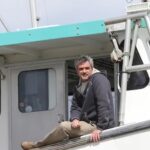 still gets a rush of adrenaline. In 2019, he began experimenting with canning some of his catch, getting the right blend of fresh fish, Calivirgin olive oil and salt. He contracted with a cannery in Oregon and launched his business, Gulf of Maine Conservas. “I’m catching the fish, I’m portioning it, I’m cooking it and then I’m containing it,” he said. “All you as the consumer have to do is open it and enjoy it.” >click to read< 16:34
still gets a rush of adrenaline. In 2019, he began experimenting with canning some of his catch, getting the right blend of fresh fish, Calivirgin olive oil and salt. He contracted with a cannery in Oregon and launched his business, Gulf of Maine Conservas. “I’m catching the fish, I’m portioning it, I’m cooking it and then I’m containing it,” he said. “All you as the consumer have to do is open it and enjoy it.” >click to read< 16:34
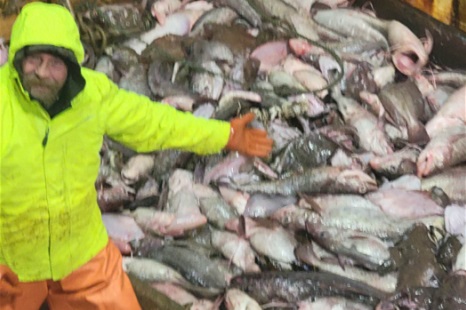
When things don’t add up. By Jerry Leeman
Sitting here towing along thinking back 20 years ago fishing in the Gulf of Maine. We used to land a lot of white hake. An average trip was always around 15k to 30k of hake 5k of monk tails on average. These days you worry of catching too many and you try to stay within the realm of your allowable catch because fish cost money to catch. Yes, even as crazy as that sounds boat quotas have been restricted from bad data collection to be so low, we have to purchase quota from other permits to maintain fishing. Then with these restrictions it puts a damper on markets. Imagine, markets that used to take in 200-500k of one specie a week then no longer are capable of taking in those fish because markets are not strong due to poor biomass data and allowable catches which have altered markets. >click to continue reading< 16:28
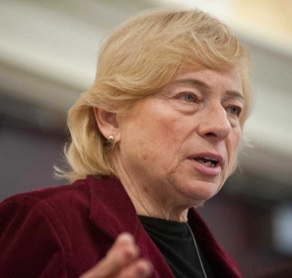
Many voices weigh in on offshore wind plan
Three days after Governor Janet Mills unveiled an offshore wind roadmap, a “comprehensive plan that offers detailed strategies” for offshore wind power in the Gulf of Maine, a handful of unconvinced citizens gathered at the Sustainable Maine Fishing Foundation Feb. 26 on Bar Harbor Road in Trenton. The idea was to inform lobstermen and interested people on offshore wind development before a Bureau of Ocean Energy Management (BOEM) presentation that opens the Fishermen’s Forum March 2 in Rockport, board member Ginny Olsen said. Energy operations consultant George Stover of Freeport, who has worked in the state’s energy industry for decades, discussed the Maine power grid and its energy sources and why, to his mind, offshore wind power is not a good fit or needed here. “If they continue down this road, it scares me,” he said. He is not alone. The idea of floating offshore wind installations in the Gulf of Maine has raised fears and concerns from environmentalists and fishermen alike. >click to read< 12:42
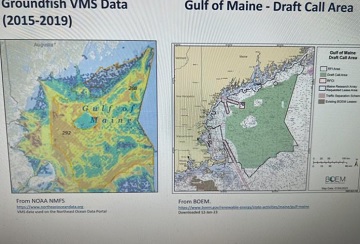
Gloucester webinar tackles concerns about wind farm projects
At the nascent stage of wind farm development in the Gulf of Maine, a webinar last week looked at the possible impacts to marine life, coastal communities and fisheries while acknowledging there are many unknowns to such projects. Capt. Al Cottone, a commercial fisherman and executive director of the Gloucester Fisheries Commission, said the industry has “a ton of questions that haven’t been answered yet. And I don’t think these questions will be answered in the time frame that was shown earlier in the presentation and it’s very concerning to the industry.” “We are very concerned about the displacement of vessels,” Cottone said. “Once you start losing access to fishing grounds, it puts a lot of pressure on other fishing grounds.” >click to read< 12:28




































